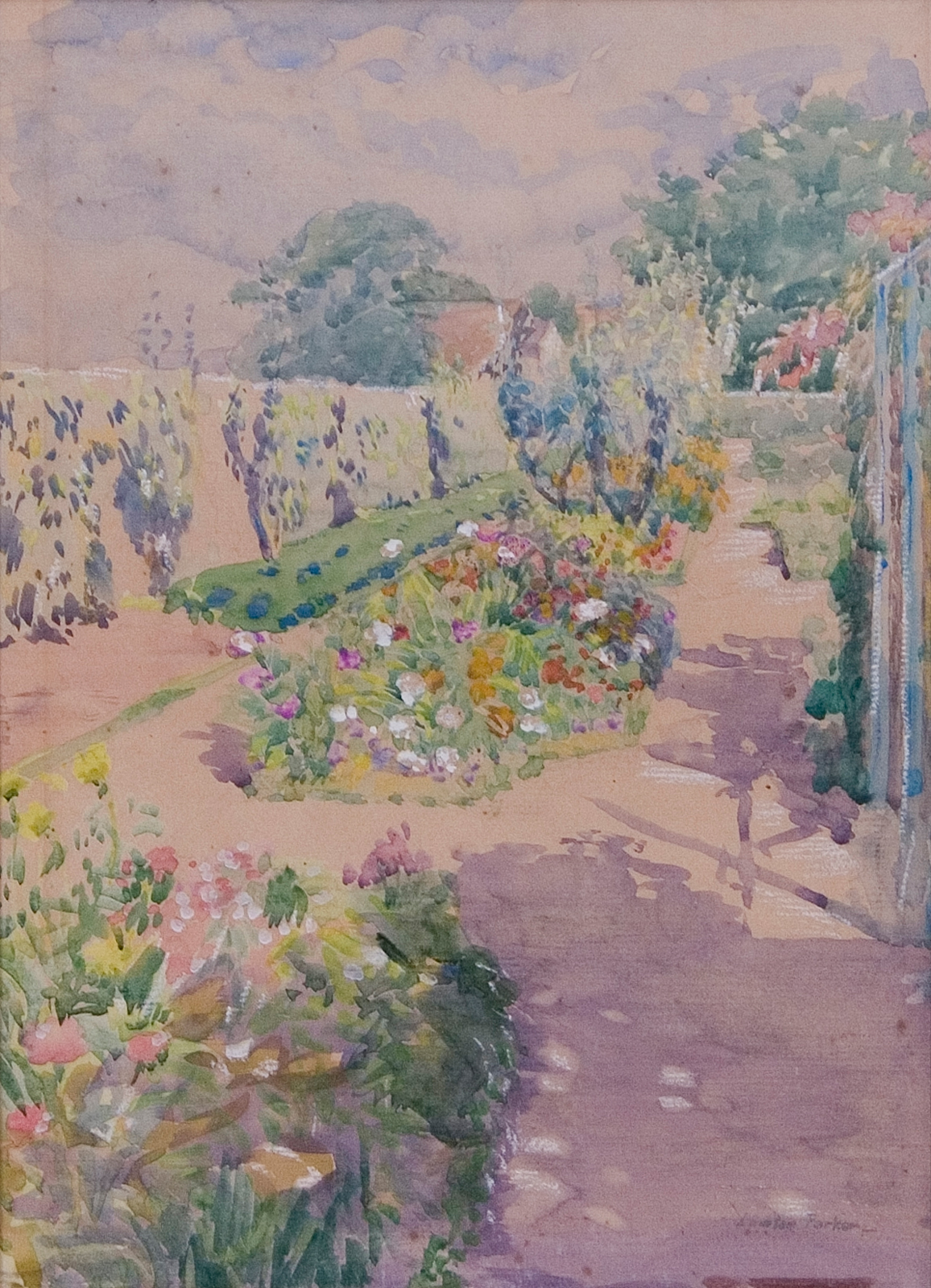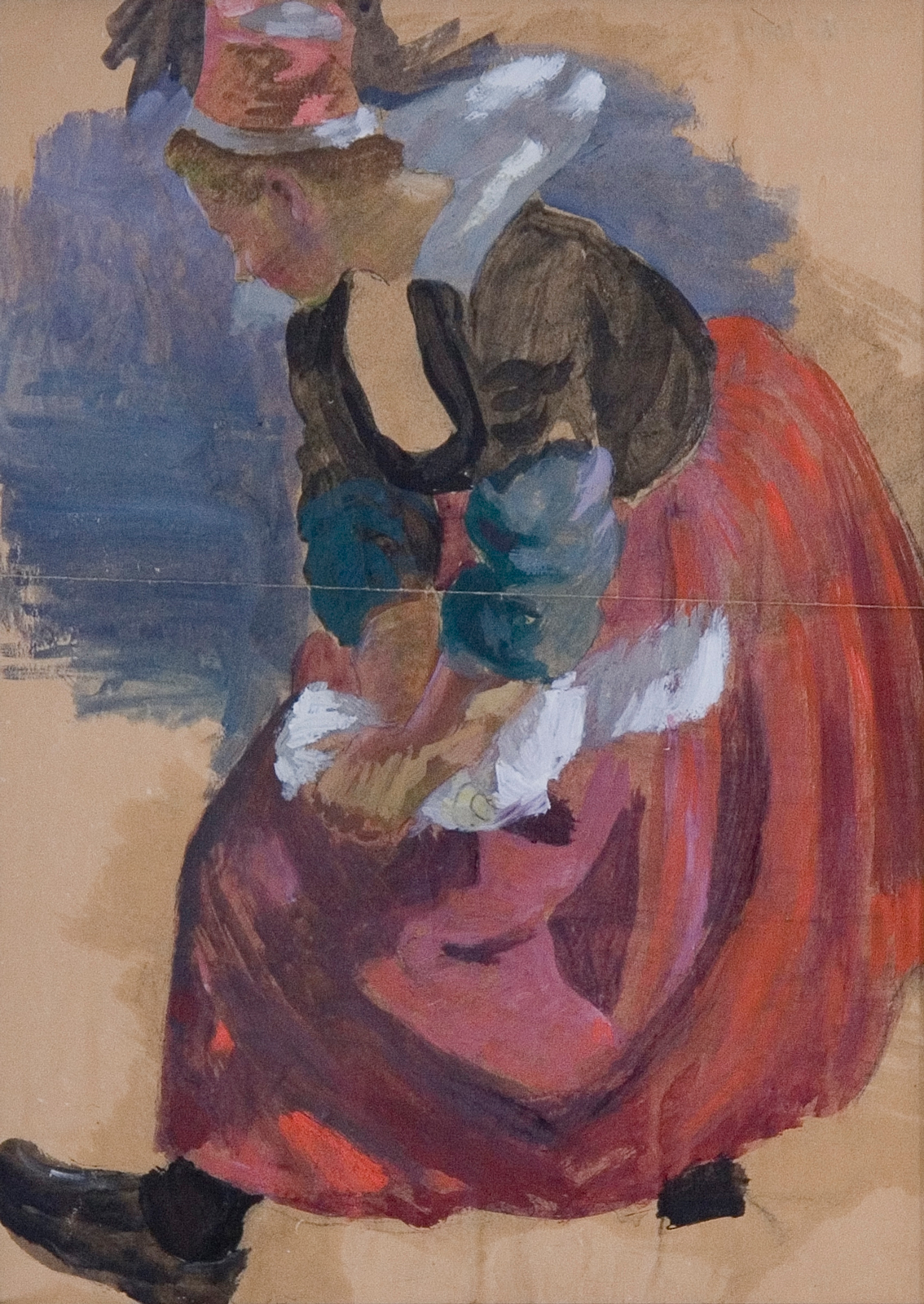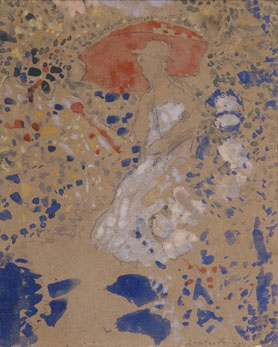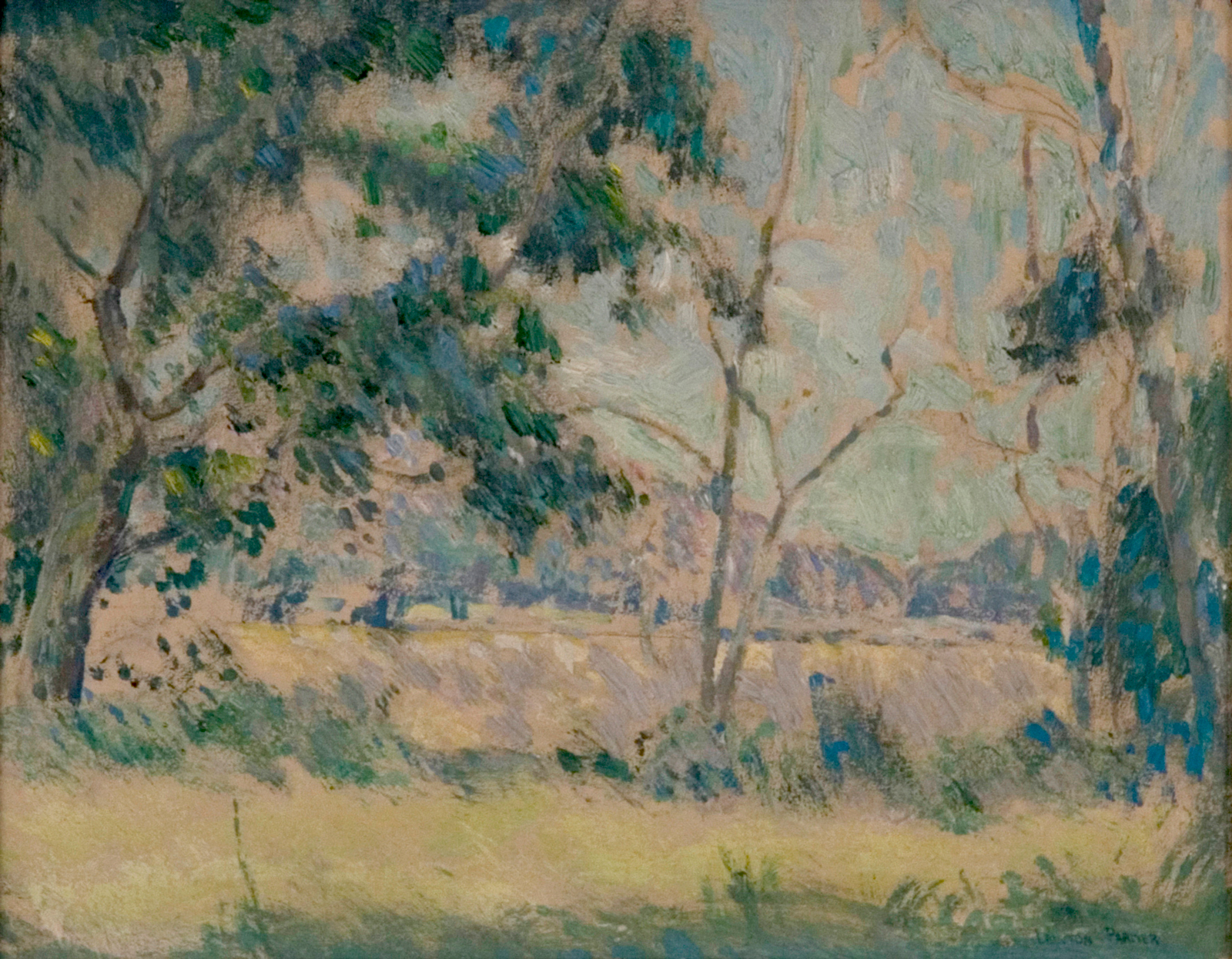Lawton Parker
Lawton Parker (1868-1954) was a member of the Giverny Luminists, that group of American painters who moved as close to Claude Monet’s studio as they could to live and practice their art. What remains of Parker’s oeuvre, after the Nazis destroyed much of it in World War II, shows, as one critic wrote “realism…carried to its ultimatum as we seldom see it,” or as Parker himself put it: “a rational view of modern Impressionism.”
After a childhood split between Michigan and Nebraska, Parker’s artistic studies began at the School of the Art Institute of Chicago (SAIC) in the late 1880s followed by stints at the Académie Julian in Paris (where he studied with James McNeill Whistler), the Art Students League in New York (where he studied with William Merritt Chase), and back to Paris again at the École des Beaux Arts. His academic training set him up for a career as a portraitist and painter of figures, but an initial visit to Giverny in 1903 moved the needle of his art toward impressionism.
Well-regarded in America, schools like SAIC and the Chicago Academy of Fine Arts tried to retain Parker as a teacher to increase their prestige, but Parker’s sights were set on France. Starting in 1909 he was in Giverny every summer, sharing a studio with Friedrick Frieseke and encouraging one of his students from Chicago, Louis Ritman, to join. Parker’s work from that period often depicts female figures arranged amidst a flurry of leaves, trees, water, and sunlight, a delicate balance of realism — particularly in the faces and skin of his female models, as well as the colors of their natural surroundings — combined with the loose experimentation of Impressionism that had once set Paris’s art community aflame.




